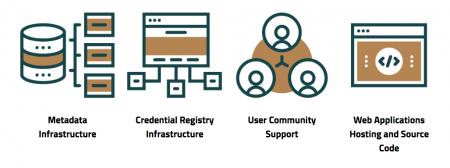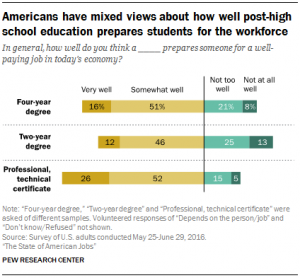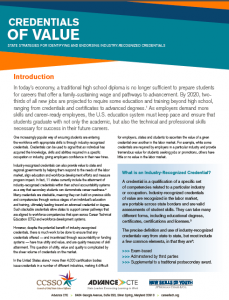 State education agencies, legislators and educators faced significant challenges from the coronavirus pandemic, including adapting to remote and hybrid delivery of hands-on learning, and responding to local and national skilled labor shortages. The number of state-level CTE policies enacted that affect Career Technical Education (CTE) fell to the lowest number in 2020 since Advance CTE and the Association for Career and Technical Education (ACTE) began publishing these annual Year in Review reports.
State education agencies, legislators and educators faced significant challenges from the coronavirus pandemic, including adapting to remote and hybrid delivery of hands-on learning, and responding to local and national skilled labor shortages. The number of state-level CTE policies enacted that affect Career Technical Education (CTE) fell to the lowest number in 2020 since Advance CTE and the Association for Career and Technical Education (ACTE) began publishing these annual Year in Review reports.
However, with a new commitment to upskilling and reskilling American learners and a CTE without limits, 41 states enacted 138 policies impacting CTE and career readiness in 2021. Advance CTE and ACTE have witnessed the return of pre-pandemic numbers in state policy actions in 2021 with policies affecting the secondary, postsecondary, adult and/or workforce systems, and including legislation, executive orders, and budget provisions that significantly changed funding.
Each year, Advance CTE and ACTE publish a yearly state policy tracker and categorize each state policy action by topic. In 2021, the top five topics that state policy most frequently addressed were:
- Funding;
- Access and equity;
- Data, reporting and/or accountability;
- Industry partnerships and work-based learning; and
- Industry-recognized credentials.
Industry-recognized Credentials
Policies that address the attainment of credentials recognized by industry, including micro-credentials, such as badges, and educational Degrees are categorized by this topic. Nineteen states enacted 33 policies affecting industry-recognized credentials. Policies in this area are designed to increase or incentivize the attainment of certifications, credentials or degrees aligned with labor market information or industry need. Below are a few state policy actions from this category:
- Idaho established a workforce readiness and CTE high school diploma. The law outlines the requirements for learners to earn the diploma, such as passing technical skills assessments and workplace readiness assessments, demonstrating CTE competency standards, and earning a badge or an industry-recognized credential.
- Louisiana created the M.J. Foster Promise Program, which provides financial assistance of up to $3,200/year to a learner enrolling in a two-year or shorter postsecondary program aligned to a state-recognized in-demand, high-wage occupational field and leading to an industry-recognized credential.
- Texas established the Texas Reskilling and Upskilling through Education (TRUE) program. This program awards grants to an eligible agency, such as a junior college, technical institute or local chamber of commerce, to create, redesign or expand training programs that lead to industry-recognized credentials and create pathways to employment for learners in accordance with local workforce needs.
State Policies Impacting CTE: 2021 Year in Review marks the ninth annual review of CTE and career readiness policies from across the United States conducted by Advance CTE and ACTE. This report does not describe every policy enacted within each state but instead focuses on national policy trends.
View the full report and 2021 state policy tracker here.
Dan Hinderliter, Senior Policy Associate


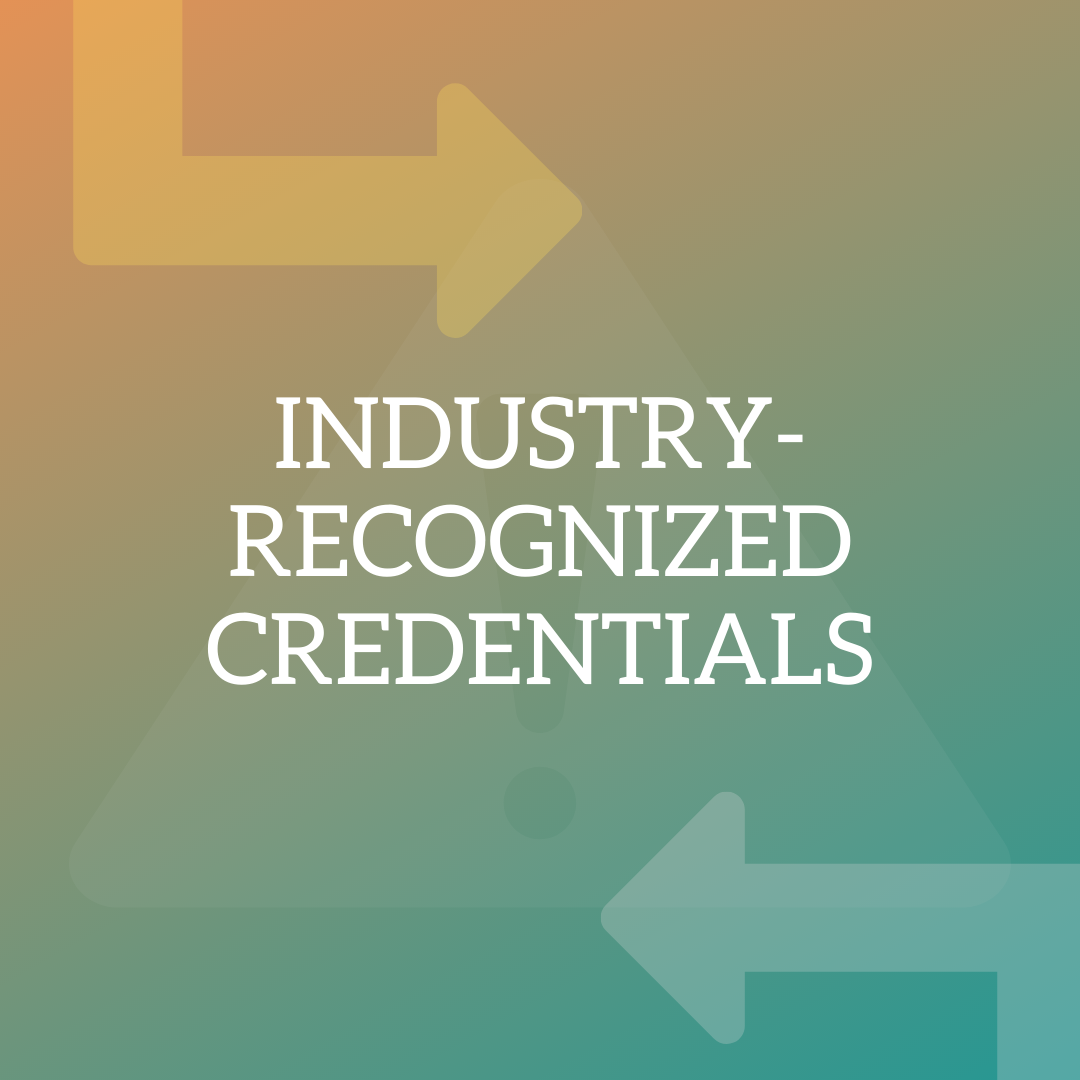 Even as unemployment numbers climb steadily upwards and the stock market continues its volatile roller coaster ride, it is far too soon to measure the full effect of the COVID-19 (Coronavirus) pandemic and its impact on Career Technical Education (CTE) and industry-recognized credential attainment in particular. High schools, community colleges, area technical centers and places of business have shut their doors to protect learners and to comply with state orders. It is fair to predict that, based on the
Even as unemployment numbers climb steadily upwards and the stock market continues its volatile roller coaster ride, it is far too soon to measure the full effect of the COVID-19 (Coronavirus) pandemic and its impact on Career Technical Education (CTE) and industry-recognized credential attainment in particular. High schools, community colleges, area technical centers and places of business have shut their doors to protect learners and to comply with state orders. It is fair to predict that, based on the  Industry-recognized credentials are an essential component of any high-quality Career Technical Education (CTE) program. They indicate the entry-level competencies learners need in a given career field and signal to employers that an individual is prepared for work. But in the midst of a global pandemic, with nearly every state issuing, to varying degrees, stay at home orders that have resulted in school closures and limited access to testing facilities, how can learners continue to earn industry-recognized credentials?
Industry-recognized credentials are an essential component of any high-quality Career Technical Education (CTE) program. They indicate the entry-level competencies learners need in a given career field and signal to employers that an individual is prepared for work. But in the midst of a global pandemic, with nearly every state issuing, to varying degrees, stay at home orders that have resulted in school closures and limited access to testing facilities, how can learners continue to earn industry-recognized credentials? 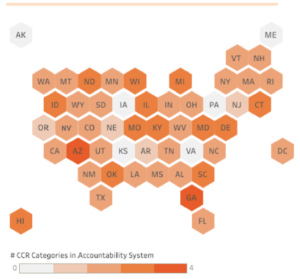 In a strong signal of support for Career Technical Education (CTE) and career readiness in high school, 40 states are now measuring career readiness in their state or federal high school accountability systems. Fewer than half as many – 17 – were measuring career readiness just five years ago.
In a strong signal of support for Career Technical Education (CTE) and career readiness in high school, 40 states are now measuring career readiness in their state or federal high school accountability systems. Fewer than half as many – 17 – were measuring career readiness just five years ago.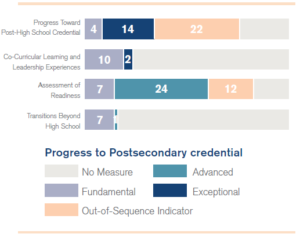 Another commonly used measure is Progress Toward Post-High School Credential. Seventeen states and the District of Columbia include measures aligned with the Destination Known recommendations, and another 22 states include out of sequence indicators. A number of states include either pathway completion or dual enrollment coursework in their accountability plans without requiring that experience to be accompanied by the completion of a state-defined college- and career-ready course of study, which is the Fundamental measurement in this category.
Another commonly used measure is Progress Toward Post-High School Credential. Seventeen states and the District of Columbia include measures aligned with the Destination Known recommendations, and another 22 states include out of sequence indicators. A number of states include either pathway completion or dual enrollment coursework in their accountability plans without requiring that experience to be accompanied by the completion of a state-defined college- and career-ready course of study, which is the Fundamental measurement in this category.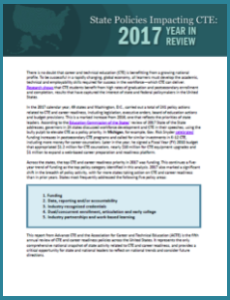 2017 was a banner year for Career Technical Education (CTE). Overall, 49 states and the District of Columbia passed a total of 241 policies related to CTE and career readiness, a marked increase from 2016. But while it is encouraging to see a groundswell of enthusiasm for CTE at the local, state and national levels, how will states leverage CTE’s momentum and ensure that state action translates to better outcomes for students?
2017 was a banner year for Career Technical Education (CTE). Overall, 49 states and the District of Columbia passed a total of 241 policies related to CTE and career readiness, a marked increase from 2016. But while it is encouraging to see a groundswell of enthusiasm for CTE at the local, state and national levels, how will states leverage CTE’s momentum and ensure that state action translates to better outcomes for students? 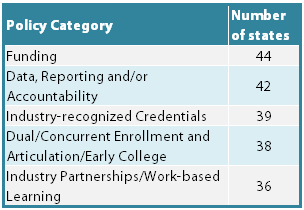 There was also a lot of activity related to data, reporting and accountability, largely due to state work around the Every Student Succeeds Act (ESSA). In 2017, 35 states identified measures of career readiness in their federal accountability systems, and many of these measures included industry-recognized credential attainment, dual-credit completion and work-based learning participation.
There was also a lot of activity related to data, reporting and accountability, largely due to state work around the Every Student Succeeds Act (ESSA). In 2017, 35 states identified measures of career readiness in their federal accountability systems, and many of these measures included industry-recognized credential attainment, dual-credit completion and work-based learning participation.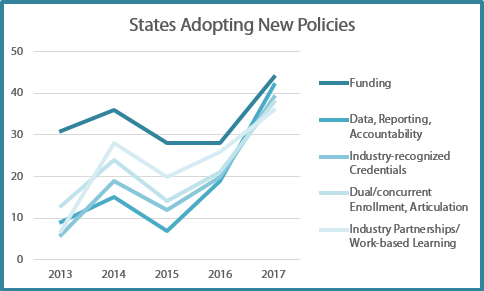
 Meanwhile, the Ohio Department of Education expanded options for students on the credential graduation pathway by
Meanwhile, the Ohio Department of Education expanded options for students on the credential graduation pathway by 
 State Name: Virginia
State Name: Virginia